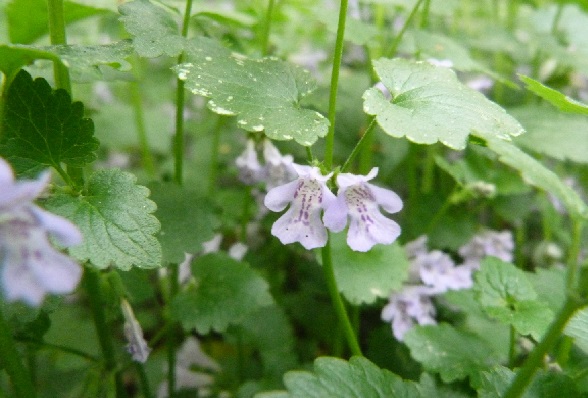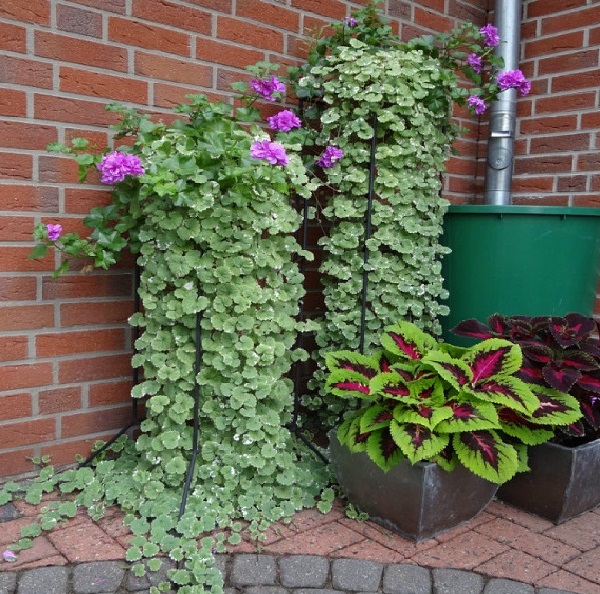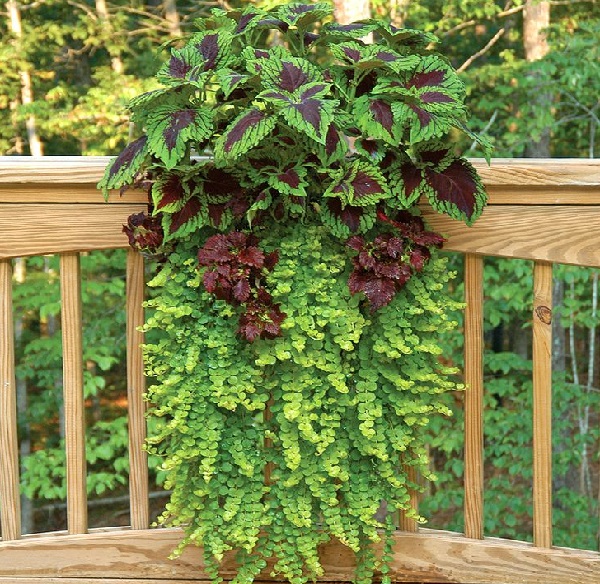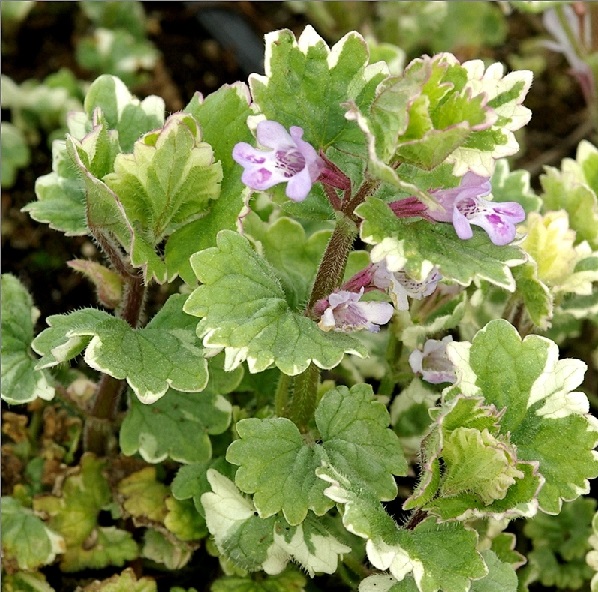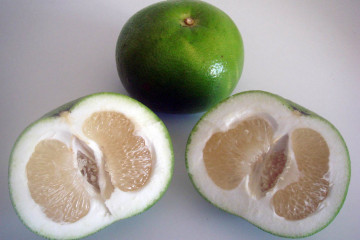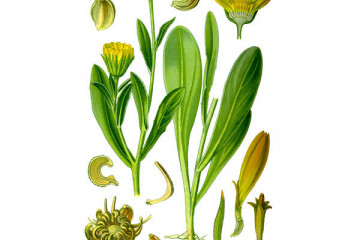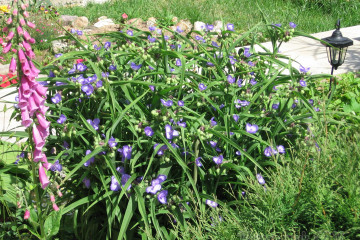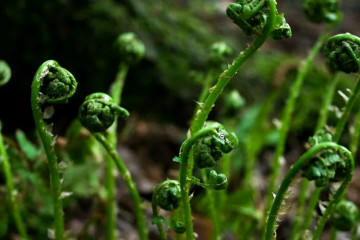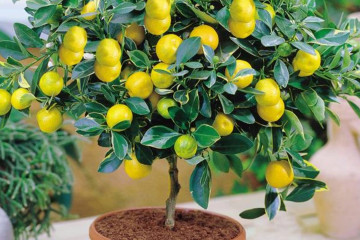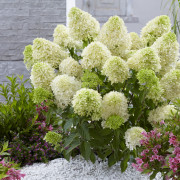Where ivy budra grows and use in design
Content:
Ivy budra is an evergreen crop that has been growing for many years. She has a stem creeping along the ground, strongly branching and quickly rooting. The stem has four edges. The leaves are small, cross-opposite. This means that two leaves grow from one node: one is directed upward and the other downward. Budra belongs to the Yasnotkov family, like mint, lemon balm. K. Linnaeus, an outstanding Swedish scientist, writes that the name "budra" comes from the word from Ancient Greece, which means "field mint".
Budru is used in folk medicine, in official medicine it is used in Germany and France. To make medicinal tea, it is harvested during flowering, in May - June, the top of the plant with flowers is cut with a knife. Then they are assembled into bundles and hung to dry. Drying should take place at a temperature of + 40 ° C.
Useful properties of the plant
Only shoots, foliage and flowers have medicinal properties. Roots are not used in medicine. In pharmacies, Budra can be purchased in the form of herbal tea.
Medicinal properties:
- saponins help against sclerosis, thin phlegm when coughing, promote the synthesis of the hormone progesterone;
- the bitterness in the herb improves appetite and aids digestion, activates the production of gastric juice;
- tartaric acid is required by the body in stressful situations, increased radiation, diarrhea. It promotes vasodilation, helps the heart;
- choline helps the activity of the liver, brain, and nervous system. Choline reduces the amount of bad cholesterol;
- zinc and its compounds are needed by the pituitary gland, prostate and pancreas, and promotes fat burning.
The plant also:
- stops bleeding;
- used as a choleretic and diuretic;
- tones up;
- eliminates worms;
- lowers fever;
- pain relieves.
Application in traditional medicine
Infusion and tea are drunk at:
- acute respiratory diseases;
- with diseases of the stomach and intestines;
- with liver diseases.
Poultices and compresses do:
- with fractures - accelerate tissue healing;
- gruel from fresh foliage is applied to abscesses;
- freshly squeezed juice cleanse wounds with pus, apply to ulcers and burns, caress the mucous membrane for stomatitis or sore throat.
In the Caucasus, a culture is brewed and then applied to a purulent rash, acne, boils, urticaria. The plant, brewed in water or milk, is used for catarrh, asthmatic manifestations, cough, sore throat, menstruation disorders. For severe bruises, rashes or gout, you can bathe in the bathtub with the addition of budra infusion.
Contraindications
Budra is a poisonous culture. It can be consumed only after consulting a doctor; you should not change the dose yourself. Also, you can not use Budra during pregnancy and feeding a baby.
Ivy plants
Ivy plants grow along roadsides, along river banks, in fields and meadows. In winter, their foliage is green. It is rounded or heart-shaped, the edges of the foliage are crenate. Leaves grow back, then age, and then they are replaced by younger ones. It grows from the end of April until the blooming of the buds, and then begins to grow after the flowering ends and almost until frost.Flowers are two-lipped, 2-6 pcs., Are located in the axils of the foliage.
Description of ivy ampelous budra
Such a heap has a stem up to 60–70 cm long. On the stem there are branches that are directed upward and stand straight. When the culture begins to bloom from May to July, the buds are light azure or pale purple in color. Further, the fruits ripen, which disintegrate into four smooth nuts.
Where grows
Culture is growing in all regions of Russia, but it is not in some areas beyond the Urals. Most of all, grass likes river floodplains and fertile alluvial soils.
Budra ampelous can grow in a flowerpot, pots, baskets.
For planting as soil, mix 1 part peat and 1 part sand. A cutting is first planted in a flowerpot, covered with a film and placed in a warm room with good, but diffused lighting, that is, not in direct sunlight. They constantly monitor the moisture content of the earth. A flowerpot or flowerpot is put in a permanent place, covered with a film. If the air temperature is below 10 ° C, then the container is brought from the street into the apartment.
The use of ivy budra in landscape design
The use of budra in the landscape is diverse. The foliage of the culture looks charming, hanging in bunches from hanging pots. Designers love to decorate retaining walls, balconies and loggias with this culture.
Also ivy-shaped budra is used in landscape design to decorate flower beds, lawns and curbs. In addition, it is planted in the country, as they prevent the drying of water in the soil, do not allow weeds to grow. Boudre looks like a "green bedspread". Plants planted together with the seaside astericus look great.
If the stems of budra touch the soil, then roots grow in this place. The plant grows very easily, and so that it does not grow further, excess shoots should be cut off.
The grass grows well both in the sun and in shade. She needs moderate hydration, watering 2-3 times a week is enough. In case of heat and drought, it is recommended to spray the crop. It is also advised to plant it near small ponds. Plants are frost-resistant and should not be covered for the winter.
Ivy Budra Variegata
Ivy budra of this type has bright emerald foliage, completely covered with whitish spots. It is believed that this variegated plant loves heat more and prefers bright lighting. If you place it in the shade, then the variegated foliage loses its decorative effect.
Planting and leaving
For planting the ivy-leaved Budra Variegata, a substrate is first made from 1 part of sand, 2 parts of humus and 2 parts of leafy soil. Boudre growing in the house requires bright, but diffused lighting, the windows should be covered with tulle curtains. The garden can be planted in partial shade.
Household plants need an air temperature in the summer of + 18-25 ° C, and in winter the room should be + 10-12 ° C.
In autumn, plants are often watered, in winter - once a week, and in summer and spring, abundantly and often. In summer, it is better to spray plants, and also in winter, if there are radiators nearby, which dry the air and lower the humidity.
It is better to put indoor plants on the loggia in the summer, but make sure that they do not stand in direct sunlight.
In the spring, the budra is cut off. Those shoots that remain after pruning are used for reproduction. Flowers are transplanted if they do not grow at all or are constantly sick.
Ivy budra is a great option for decorating balconies and verandas. It is unpretentious in cultivation and care, and looks very attractive.
